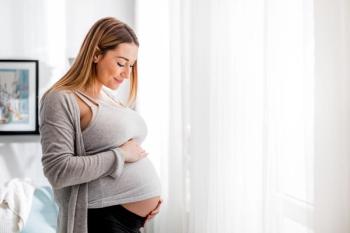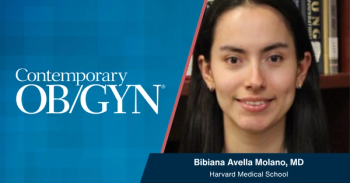
Mother-to-child hepatitis b transmission presents economic trade-offs
Expanding peripartum prophylaxis could be more cost-effective, but would likely lead to significant over-treatment.
Efforts to reduce mother-to-child hepatitis B transmission by selectively using peripartum prophylaxis may be cost-effective in some settings, but the testing required to identify higher-risk cases may blunt the cost-efficacy in other settings, according to a new report.
Those are the key findings of a new report that examined the economics of adding peripartum antiviral prophylaxis (PAP) to standard newborn vaccinations for high-risk neonates. PAP was recommended in certain cases by the World Health Organization (WHO) in 2020. The new analysis was published in
Corresponding author Shevanthi Nayagam, PhD, of Imperial College London, and colleagues, noted that the WHO has set a goal of
In addition to immunizing infants, administering tenofovir disoproxil fumarate to pregnant women as PAP has also been shown to reduce the risk of transmission in high-risk cases. According to the WHO, the women at highest risk of transmission are defined as those with HBV DNA concentrations of at least 200,000 international units (IU) per mL. Since viral load testing is costly and not available in every country, the agency said positivity for hepatitis B e-antigen (HBeAg) could be used as a proxy for having a high viral load.
However, that recommendation has created a 2-step screening process, Nayagam and colleagues said. First, patients are screened for hepatitis B surface antigen (HBsAg), and if they are positive, they subsequently undergo either an HBV DNA test or an HBeAg test to determine if PAP is needed. That double-test protocol creates a significant burden, the authors said, “because both of these tests are expensive and rarely available (outside of clinics that have access to high-throughput laboratories), and currently there are no rapid diagnostic tests for HBV DNA or HBeAg that work sufficiently well.”
One alternative, they said, would be to offer PAP to all women who test positive for HBsAg. That process would eliminate the need for the second test, they said, but could also lead to overtreatment of women who ultimately would not need PAP to prevent transmission. To date, such a strategy has not been thoroughly evaluated. Thus, Nayagam and colleagues decided to use mathematical simulations to see what impact different PAP criteria might have on the efficacy and cost-effectiveness of transmission-prevention efforts in 110 countries.
The authors’ findings were mixed. Giving PAP to women with a high viral load would prevent 1.1 million new neonate infections by 2030, they found, and 3.2 million neonatal infections by the year 2100. But, at current costs, the strategy would only be cost-effective in 26% of the countries analyzed. If costs were lowered by 60-75%, the program could be cost-effective in 70% of countries studied, they found.
Meanwhile, the universal PAP strategy based on HBsAg positivity could be more cost-effective, the authors found, but it would also lead to a quintupling of the use of antiviral treatment.
Ultimately, Nayagam and colleagues said scaling up the use of HepB-BD is likely the most cost-effective method of reducing mother-to-child transmission, though they said PAP could provide extra benefits depending on the cost and access realities in a particular country.
“Promising theoretical strategies of offering prophylaxis to all pregnant women who are HBsAg-positive without accompanying risk stratification could also improve feasibility and cost-effectiveness,” the authors concluded, but they said that would depend on local costs. They said significant research on implementation would be needed to ensure such a strategy would meet its goals.
Newsletter
Get the latest clinical updates, case studies, and expert commentary in obstetric and gynecologic care. Sign up now to stay informed.




















